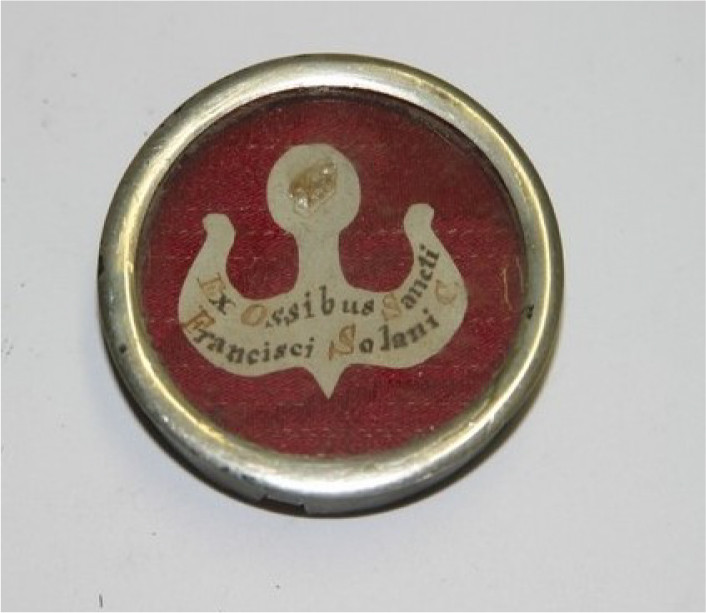Upon his death, Francisco Solano became a sacred apothecary. The curative power of his relics attracted to his chapel pharmacy in Lima hundreds of limping ill who consumed his body and its aura as sacred materia medica. The fame of the curative power of his bones spread across the oceans. Solano’s fame was Lima’s fortune. Holy relics of the singing violin of Peru who attracted birds, Indians and slaves moved to altars in Flanders and Cologne, where they can still be seen today.
Extant relic of Solano in Flanders
Extant relic of Solano in Flanders (Museum De Mindere, Sint-Truiden, Belgium, MVM/OFM/R414; public domain).
Jorge Cañizares-Esguerra
Further reading
- Gálvez Peña, C.M. (2008) ‘El carro de Ezequiel: la monarquía hispana de fray Buenaventura de Salinas y Córdova’, Histórica, 32 (1): 39–75.
- Gálvez Peña, C.M. (2011) ‘Sueños, profecías, visiones y política en las crónicas limeñas del siglo XVII’, in Los sueños en la cultura iberoamericana, siglos XVI–XVIII, edited by S.V. Rose, P. Schmidt, and G. Weber (Seville: Consejo Superior de Investigaciones Científicas).
- Jouve-Martín, J.R. (2004) ‘En olor de santidad: hagiografía, cultos locales y escritura religiosa en Lima, siglo XVII’, Colonial Latin American Review, 13 (2): 181–98.
- Rubial, A. (2006) Profetisas y solitarios: espacios y mensajes de una religión dirigida por ermitaños y beatas laicos en las ciudades de Nueva España (Mexico City: Fondo de Cultura Económica).





